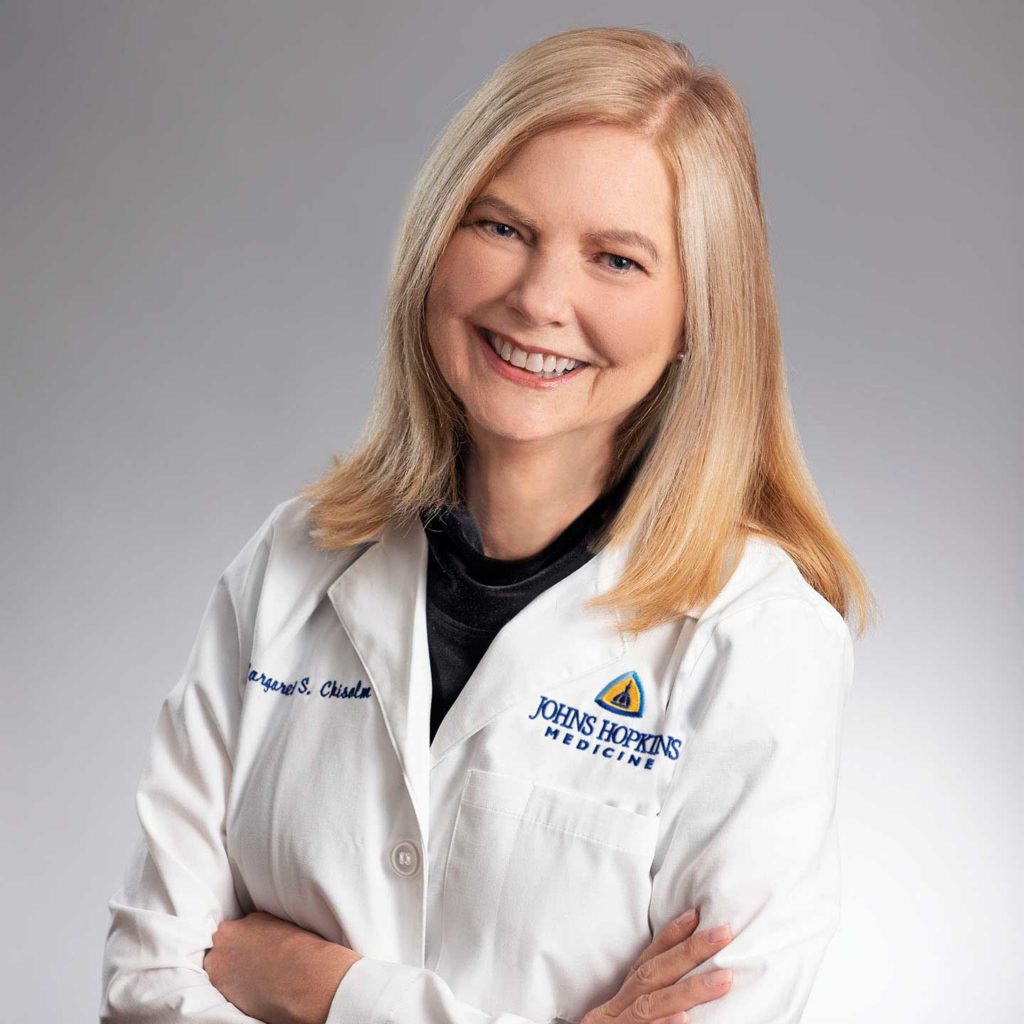Takeaway
A clinically excellent physician always takes the time to ask his/her patient about the history of substance use in their parents and siblings, as well as aunts, uncles, grandparents, and cousins; and always asks about adoption.

Passion in the Medical Profession | May 29, 2018 | 2 min read
By Margaret Chisolm, MD, Johns Hopkins Medicine
Ms. G was 21 years old and 30 weeks pregnant when I met her several years ago at the Center for Addiction and Pregnancy (CAP), a perinatal substance abuse treatment program at Johns Hopkins Bayview Medical Center. She came to CAP for help with her heroin addiction and I remember Ms. G like it was yesterday.
A challenging transition to adulthood
She had an idyllic childhood, growing up in the leafy suburbs of Baltimore with her physician father and attorney mother. She attended an exclusive private school, where she had been a straight A student until her last two years of high school. It was then that Ms. G got her driver’s license and “started running wild around the city.” She eventually dropped out of school. In the past two years before we met, Ms. G had been working as an exotic dancer, which quickly ended after her first trimester.
A sudden addiction
Ms G and her boyfriend (and father of her baby) had been together since her junior year of high school. He was the person who first introduced her to heroin via injection on their first date, and it was “love at first sight,” with both him and the heroin.
She soon became a daily heroin user, always by injection. About a year and a half later, she entered a residential treatment program, where she stayed for fifteen months. After discharge, she went to live with her boyfriend and, not surprisingly, immediately started using again, for which she “hated” herself. After her boyfriend’s arrest on drug charges, Ms. G moved back in with her parents. When she found out she was pregnant, her parents brought her to CAP, where she proceeded to do very well in treatment, both during and after her discharge.
Pregnancy and opioid use disorder
What makes Ms. G’s case so special and so memorable to me? In many ways, it’s a very typical story. Addiction cuts across all socioeconomic groups. Women who become opioid-dependent frequently report being introduced to heroin injection by their boyfriends. Pregnant women with opioid use disorder are highly motivated for treatment and are remarkably successful in recovery.
The importance of taking a family history
What was remarkable about Ms. G’s case is what I learned about her family history. She was adopted at birth from a biological mother who herself had been a patient at CAP. Her heroin use made it impossible for her to take care of a baby and so she placed Ms. G for adoption when she was just a few days old. Ms. G’s strong hereditary risk for opioid dependence totally eclipsed her enriched upbringing. When she encountered heroin, she found she had a hunger (“love”) for it.
Ms. G’s case illustrates the strong role of hereditary factors in addiction, which account for upwards of 40% of one’s risk of addiction. It also underscores the importance of taking a family history in assessing addiction risk. A clinically excellent physician always takes the time to ask his/her patient about the history of substance use in their parents and siblings, as well as aunts, uncles, grandparents, and cousins; and always asks about adoption.
To read more about this case and learn more about the diagnosis and treatment of substance use disorders, please see chapter 5 of Chisolm & Lyketsos’ book Systematic Psychiatric Evaluation: A Step-by-Step Guide to Applying the Perspectives of Psychiatry. Johns Hopkins University Press: Baltimore. 2012. ISBN-13: 978-142140702.

